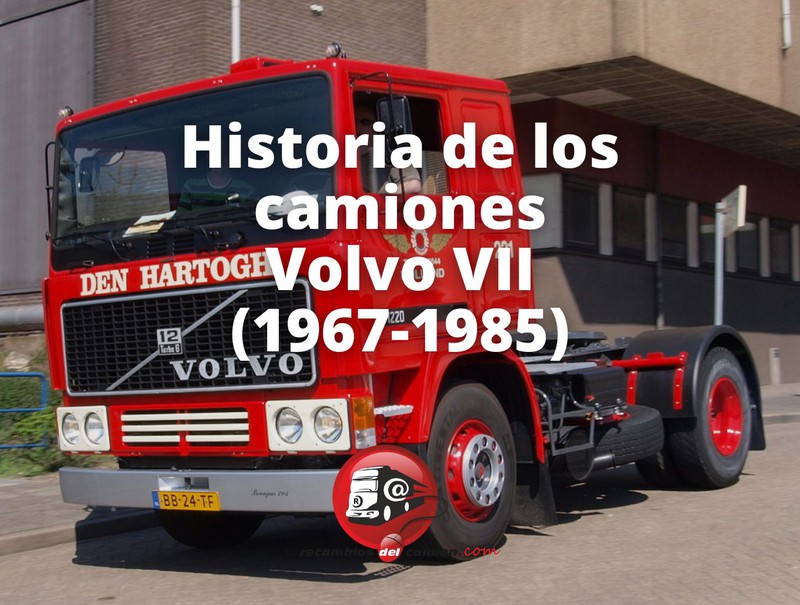History of Volvo VII trucks (1967-1985)
We continue with the summary of the interesting history of the Volvo brand, focusing on its section dedicated to trucks. In this article we talk about the F ranges of the brand, which led to the consolidation of Volvo in the international market, becoming one of the best-selling brands worldwide.

In the mid 60s Volvo improves its mid-size range by turning the Raske Tiptop into the F85, with a new larger engine. From 1968 to 1974 the economy version, the F84, was also offered with a lower payload and without power steering.
In 1964 they updated the Viking model by mounting the tilting cab of the Raske model, becoming the F86. It also got a more powerful engine, a new eight-speed gearbox, and a general update to most components. The F86 was also assembled in Scotland, for sale in the British Isles. Starting in 1976, the cabin of these models was improved, making it more comfortable for the driver.
Heavy trucks were also updated in the mid-60s. This range was oriented towards exports and was the basis for creating the multinational that is Volvo today. It sold very well in many countries and earned a good reputation as a strong and durable truck.
The F88 was an evolution of the Titan Tiptop, completely redesigned. It included a new engine, a new eight-speed gearbox, and a stronger chassis and suspension. A variant was also created in 1970, the G88, with the front axle further forward, to increase its maximum load to 52.5 tons.
In 1971 the larger F89 was introduced, with the new 12-litre engine, development of which began in 1969. The truck and engine were designed to comply with a West German regulation setting a limit lower for the number of horses per gross combined weight. To continue selling trucks in the heavier class, Volvo developed a new, more powerful engine and the F89 was the first Volvo truck to be sold with only turbo engines. The 330PS TD120 engine was so tall that it had to be mounted tilted into the frame to fit under the cab. This made it impossible to convert the truck for right-hand drive. Countries with left-hand traffic had to make do with a stronger version of the F88 with engine power increased to 312 hp.
In 1977 the F10 and F12 were launched, incorporating great innovations for the time. The cabin evolved considerably increasing the safety and ergonomics of the seat. The F16 was launched in 1986, with more power. In total, from 1977 to 1993, Volvo sold 200,000 units of this series.
Basic chassis components and also transmission components in 1977 were largely based on those introduced in 1973 for Volvo's N-series trucks. The numbering of these models indicates the displacement of the engine in liters. Various horsepowers were offered and the engines incorporated various modifications over the years. All engines in this range were straight-six turbodiesels.
In addition to the original flat-roof version, the spacious, high-roof "Globetrotter" cab was added as an option during 1979. The series received two major updates during its production run. The first came in 1983: it included major changes to the cab, such as a larger windshield and higher roof, and a new weight-reduced chassis with parabolic springs. The engines were also updated, but without changing the power. The Globetrotter received a taller windshield, coming to the top of the taller roof. The F10 model won the International Truck of the Year Award in 1984 with this update.
The second update came in 1987, with the arrival of the powerful F16 and some cosmetic changes and improved aerodynamics. The F16 truck had a new straight-six engine with four valves per cylinder and a high-position camshaft. It was widely used to haul large loads, such as logging trucks in Scandinavia, competing with the popular Scania V8-powered Scania AB trucks and Cummins-powered Sisu trucks in Finland. They were also popular on Australian road trains.
The F series was succeeded by the Volvo FH series in 1993.





Receive our news